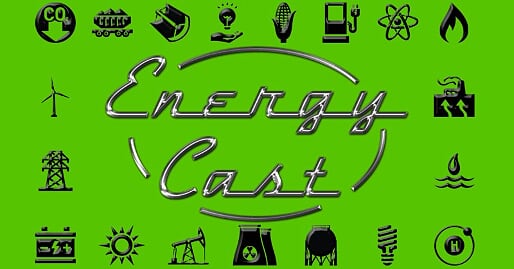Energy Cast Podcast: Equity of solar energy –
Energy Cast Podcast: Equity of solar energy –
Energy Cast is a podcast featuring some of the top experts across all links in the energy industry chain, including renewables, generation and more! Jay Dauenhauer created the show and has been hosting Energy Cast for several years.
Click below to listen to the full episode:
I like solar power because there’s a populist component to it. You don’t have to be a Fortune 50 company to develop a project. Small, smart, hardworking companies can bring a farm on line. It’s a quality about the sector that I also respected while working in the fracking industry.
RadiantREIT helps provide these developers with the financing necessary to complete a project, and enjoy the cash flows that come with it. My guest, Jim Spano, says what’s surprising is that only about 10% of these developers get to own the projects they develop.
“The small/medium-sized developer, who actually creates all the value, sells it at a huge discount,” he explains, “and the aggregators finance them under a lower cost of capital.”
This is mainly because until recently, solar projects were considered equipment, and not property. Banks will finance equipment for much shorter periods than property, much like your car vs. your house.
“Now that solar systems have been prevalent for [about] 10 years, we’ve got some good history on them, we’ve seen what their degradation is,” he says. “Companies and financial institutions are starting to get more comfortable with the long-term life of solar assets.”
Jim says RadiantREIT has advantages over banks thanks to three components:
- IRS now treating solar as real estate, can now use REITs ( Real Estate Investment Trusts )
- Unlike banks, RR not subject to ratios, reserves or any banking regulations
- Paired debt with tax equity, can go raise equity with no limitations
Jim says the company is open to financing other energy projects, but solar remains the focus. They have incorporated storage projects, as long as they are co-located with a solar farm. The Renewable Energy Credit program only works if solar is on site.
Batteries remain the storage method of choice, he says. “There’s been so much research and finding done to lower the cost of batteries, they’re economics are increasing daily.”
Ultimately, Jim says the key is finding a financing arrangement that works for everyone.
“We’ve designed the product so that it matches the need for the developer and satisfies the risk profile of our investors.” (This article was originally posted in May 2020).
Energy Cast Podcast is hosted biweekly by Jay Dauenhauer.
Learn more about the podcast here.










